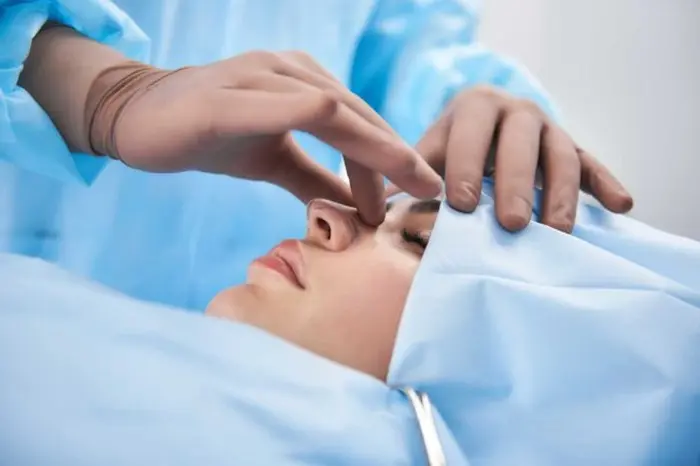Rhinoplasty, commonly known as a nose job, is a surgical procedure aimed at altering the shape or function of the nose. Postoperative soreness is a common concern among patients. Understanding the underlying causes can help manage expectations and facilitate a smoother recovery process. Here, we delve into seven primary reasons why your nose might be sore after rhinoplasty.
1. Surgical Trauma
Incisions and Tissue Manipulation
During rhinoplasty, surgeons make precise incisions to access the underlying bone and cartilage. This process inevitably causes trauma to the tissues, leading to inflammation and soreness. The degree of soreness can vary depending on the extent of the surgery and the specific techniques used.
Bone and Cartilage Reshaping
Reshaping the nasal bone and cartilage is a fundamental aspect of rhinoplasty. This involves cutting, fracturing, or grafting, which can contribute to postoperative discomfort. The body’s natural healing response to this trauma includes swelling and tenderness, which can cause soreness.
2. Swelling and Edema
Postoperative Inflammatory Response
Inflammation is a natural response to surgical trauma. After rhinoplasty, the body sends fluids and white blood cells to the affected area to facilitate healing. This results in swelling, or edema, which can contribute to a sensation of soreness as the tissues expand and press against each other.
Lymphatic System Involvement
The lymphatic system helps manage swelling by draining excess fluids from the tissues. However, surgery can temporarily impair this system, leading to fluid accumulation and prolonged swelling. The pressure from this swelling can increase soreness in the nose and surrounding areas.
See Also: 5 Best Rhinoplasty Fillers
3. Nerve Sensitivity
Nerve Disruption During Surgery
Rhinoplasty involves manipulating tissues that contain numerous nerve endings. Surgical intervention can disrupt these nerves, leading to altered sensations. Patients may experience heightened sensitivity, tingling, or numbness, which can all contribute to soreness.
Nerve Regeneration Process
As the nerves begin to heal and regenerate, they can send erratic signals to the brain, causing sensations of soreness or discomfort. This nerve regeneration process can take several weeks to months, during which patients might experience varying degrees of soreness.
4. Infection
Postoperative Infection Risk
Although rare, infections can occur after rhinoplasty. Signs of infection include increased redness, warmth, swelling, and pain at the surgical site. If an infection develops, it can significantly increase soreness and requires prompt medical attention.
Management and Prevention
To prevent infections, surgeons typically prescribe antibiotics and provide detailed postoperative care instructions. Maintaining proper hygiene and following these guidelines can minimize the risk of infection and associated soreness.
5. Hematoma Formation
Blood Accumulation Under the Skin
A hematoma is a collection of blood outside the blood vessels, often caused by surgical trauma. After rhinoplasty, small blood vessels can break, leading to hematoma formation. This can create a firm, swollen area that is sore to the touch.
Resolution and Care
Most hematomas resolve on their own as the body reabsorbs the blood. Applying cold compresses and keeping the head elevated can help reduce hematoma size and associated soreness. In some cases, surgical intervention may be required to drain a large hematoma.
6. Scar Tissue Development
Healing and Scar Formation
As the nose heals, scar tissue can form at the surgical sites. While internal scarring is a normal part of the healing process, excessive scar tissue can lead to discomfort and soreness. This is particularly true if the scar tissue impinges on nerves or other structures.
Managing Scar Tissue
Surgeons often recommend massage techniques, steroid injections, or other therapies to manage scar tissue formation. Following these recommendations can help minimize scar tissue-related soreness and improve overall recovery outcomes.
7. Use of Nasal Splints and Packing
Postoperative Nasal Supports
To support the new nasal structure and minimize swelling, surgeons often use nasal splints or packing immediately after surgery. While these supports are essential for proper healing, they can cause discomfort and soreness, especially during removal.
Adjusting to Nasal Supports
Patients may experience a sense of pressure and soreness from these supports. Surgeons typically remove them within a few days to a week after surgery, after which the soreness should gradually decrease. Proper care and following the surgeon’s advice can help manage this discomfort.
Conclusion
Soreness after rhinoplasty is a multifaceted issue influenced by various factors such as surgical trauma, swelling, nerve sensitivity, infection, hematoma formation, scar tissue development, and the use of nasal supports. Understanding these causes can help patients manage their expectations and recovery process more effectively. It is crucial to follow postoperative care instructions and maintain open communication with the surgical team to address any concerns and ensure a smooth recovery.
Related topics:

